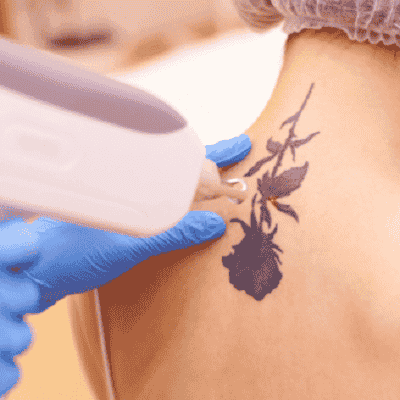Introduction
Laser tattoo removal has revolutionized the ability to start fresh with your skin. Whether you're looking to remove a tattoo entirely or make space for a new design, it's possible to get a new tattoo after Laser Tattoo Removal Oman. However, the process involves patience, proper healing, and realistic expectations about the results. This article explores the key considerations for getting a new tattoo post-removal, how long you should wait, and what to keep in mind to ensure your skin is healthy for fresh ink.
How Does Laser Tattoo Removal Work?
Before diving into whether you can get a new tattoo, it's important to understand how laser tattoo removal works. The process involves using laser technology to break down the ink particles in the tattoo, which are then absorbed and eliminated by the body. Multiple sessions are usually required, depending on the size, color, and depth of the tattoo.
Once the tattoo is faded or completely removed, your skin needs time to recover from the laser treatments. The healing process can vary based on individual skin types and the tattoo's characteristics, which is why planning for new ink needs careful timing and consideration.
How Long Should You Wait Before Getting a New Tattoo?
The primary factor in deciding when to get a new tattoo after laser tattoo removal is the healing time. Your skin needs time to regenerate and fully heal before it's ready to be tattooed again. The general recommendation is to wait at least 6 months after your final laser removal session. This allows the skin to heal, the remaining ink to completely fade, and any scarring or texture changes to smooth out.
Why Waiting is Essential for Skin Health
Tattooing over skin that hasn’t fully healed can lead to several issues, including:
- Skin Damage: Tattooing too soon can irritate your already sensitive skin, leading to scarring, infection, or even prolonged healing times.
- Uneven Results: Skin that is still healing from laser removal may not hold new ink well. The result could be patchy or faded areas in your new tattoo.
- Risk of Infection: After laser removal, your skin is more vulnerable. Waiting ensures that your skin barrier is restored, lowering the risk of infection during the tattoo process.
Considerations Before Getting New Ink
1. Assess the Condition of Your Skin
After your laser removal treatment, your skin may not look exactly the same as it did before the original tattoo. You may experience some minor scarring, texture changes, or pigment alterations. Before moving forward with new ink, consult with a dermatologist or tattoo removal specialist to ensure your skin is in optimal condition. Your new tattoo artist will also assess whether your skin can handle a new design.
2. Choose the Right Tattoo Artist
Finding a skilled tattoo artist who has experience working on skin post-laser removal is critical. They will understand how to navigate any subtle changes in skin texture or tone, and they can offer advice on the best placement and design to complement your skin's current state.
3. Realistic Expectations
The new tattoo may look slightly different than one done on completely untreated skin. Ink retention might vary, and it’s essential to have realistic expectations about how your new design will look, particularly if there is any residual scarring or skin unevenness from the removal process.
4. Tattoo Placement and Design
Some areas of your skin may respond better to a new tattoo than others. If your old tattoo was large, consider starting with a smaller design to test how well your skin holds the new ink. You may also want to adjust the placement of your new tattoo to avoid areas where the laser removal process was particularly intense.
Skin Aftercare: Healing After Both Processes
Both laser tattoo removal and tattooing require diligent aftercare to ensure optimal healing. Here’s what to keep in mind:
- Hydration and Moisturizing: Keep your skin hydrated throughout the healing process after laser removal, and follow your tattoo artist’s advice for moisturizing the new tattoo.
- Sun Protection: Protect your skin from the sun both before and after laser removal. UV rays can interfere with the removal process and can damage newly tattooed skin.
- Follow-Up Appointments: Stay in touch with both your dermatologist or laser removal specialist and your tattoo artist. They can monitor your skin’s progress and offer tips on how to maintain healthy, tattoo-ready skin.
Alternatives to Complete Removal: Lightening for a Cover-Up Tattoo
In some cases, you may not want to remove the tattoo entirely, but instead, lighten it enough to create space for a new design. Many people opt for laser removal sessions to fade an old tattoo before getting a cover-up. This approach allows for greater flexibility in design options and ensures that the new tattoo looks clean and vibrant.
Be sure to discuss your plans for a cover-up with your tattoo artist and the laser removal specialist. They can recommend the best approach, including how many removal sessions are necessary to achieve the right amount of fading for your new design.
Conclusion
Getting a new tattoo after laser tattoo removal is absolutely possible, but it requires careful planning and patience. Waiting for your skin to heal fully, consulting with professionals, and having realistic expectations about the results will help ensure your new tattoo looks as fresh and vibrant as possible. By considering the condition of your skin and choosing the right artist, you can safely begin the next chapter of your body art journey with confidence.
Whether you’re aiming to replace an old design or start fresh after removal, understanding the healing process and key considerations will help you make an informed and satisfying decision about your next tattoo.





Comments